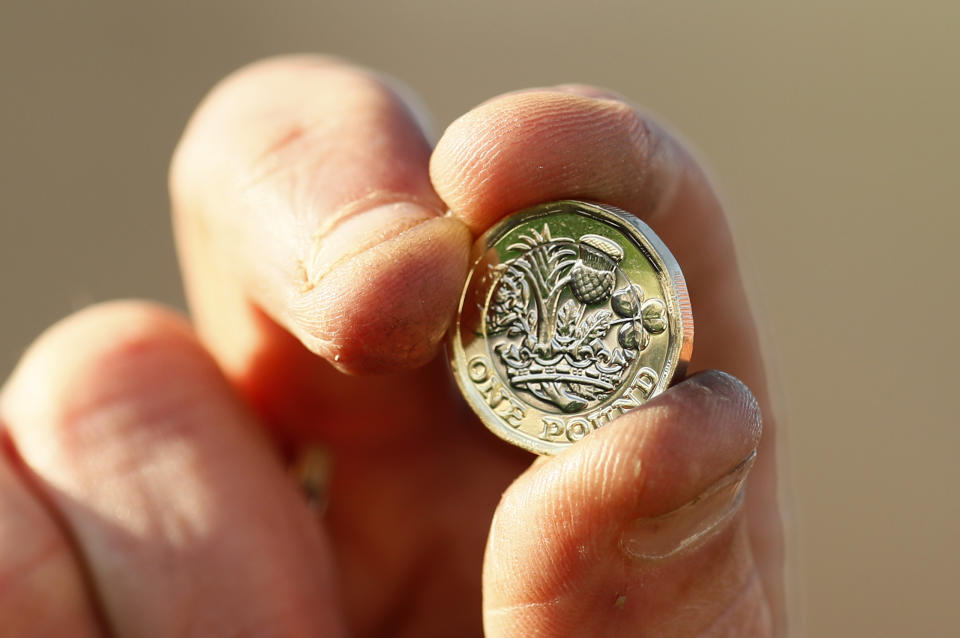Here's what happens to your old round pound coins

Hailed as a the world’s most secure currency, the new 12-sided pound coin has become a familiar sight for Britons in a comparatively short period of time.
Introduced at the end of March, the process of removing its round predecessor has picked up in intensity.
Now the clock is ticking for the last few days as legal tender for the old £1 coin.
When is the end of the “round pound”?
The old pound coin ceases to be legal tender on October 15. From the Monday, October 16, shops, bars, pubs, cafes and other outlets should stop passing them to you in change.
And, they can refuse to accept them as part payment from customers.
However, as has been reported widely, a number of businesses will continue to accept them after the deadline. And, various businesses such as supermarkets and rail companies, are struggling to reconfigure trolley and ticket machines to accept the 12-sided coins.
Some 1.2 billion old £1 coins have been withdrawn but an estimated 500 million remain in circulation.
It seems like a lot of bother, why the change?
The old round pound was introduced in 1983 to replace the paper £1 note, which were relatively easy to forge, and had a very limited shelf-life.
Over the decades, however, more and more counterfeit £1 coins entered the system, with the Royal Mint estimating that one in 30 £1 coins is fake.
The new 12-sided coin was unveiled as the most secure currency design in the world, with a unique shape, a mix of metals that would be difficult to replicate and a number of other features designed to flummox the forger.
MORE: Fake £1 coin already in circulation despite claims it’s ‘forgery proof’
What happens to all the old coins?
The old pound coins are taken to the Royal Mint in Wales where they are loaded into large containers and tipped into giant furnaces and melted down.
The molten metal from the old coins then forms part of the production process for the new 12-sided coin.

It is shaped into a long strip where a machine then “punches” discs, just as you would make cookies from dough.
Once the discs have been created they are then transferred to high-pressure presses which emboss the Queen’s face on one side of the coin and whatever the design is on the back.
What should I do with my old coins?
You can continue to spend them as normal until Sunday but if you have a change jar full of them, it’s best to take them to your bank or the Post Office to exchange them for notes, as long as they are in bags of 20.
Although the Post Office cannot exchange any of your old £1 coins for new ones, you can deposit them into your usual high street bank account via any Post Office, even after October 15.
Plenty of charities are keen to take the odd old pound here and there off your hands, too.
If you get them in your change at the petrol station, supermarket or corner shop, before but especially after the deadline, then you should ask for a new 12-sided one, or the equivalent in change.
MORE: Charities urge public to donate old round pounds as new £1 coin enters circulation
As of 23.59 on Sunday, October 15, the old coin ceases to be legal tender, so retailers, restaurants, bars etc can refuse to accept them.
If you find a pile of them at home, check with your bank that they will accept them and give your balance a timely boost.
How much is the original £1 coin worth today?
Asset manager M&G Investments calculated that a 1983 £1 coin left in a piggy bank, would have seen inflation since then erode its buying power to the equivalent of 32p.
If the £1 had been invested in shares in 1983 and tracked the rise in the FTSE all-share index, it would have had a value of £11.66 by the end of 2016, after allowing for inflation.
If you had invested a similar sum in gold, it would have had a real value of £1.05 by the end of 2016, and a cash savings account would have earned you £1.33.

 Yahoo Finance
Yahoo Finance 
